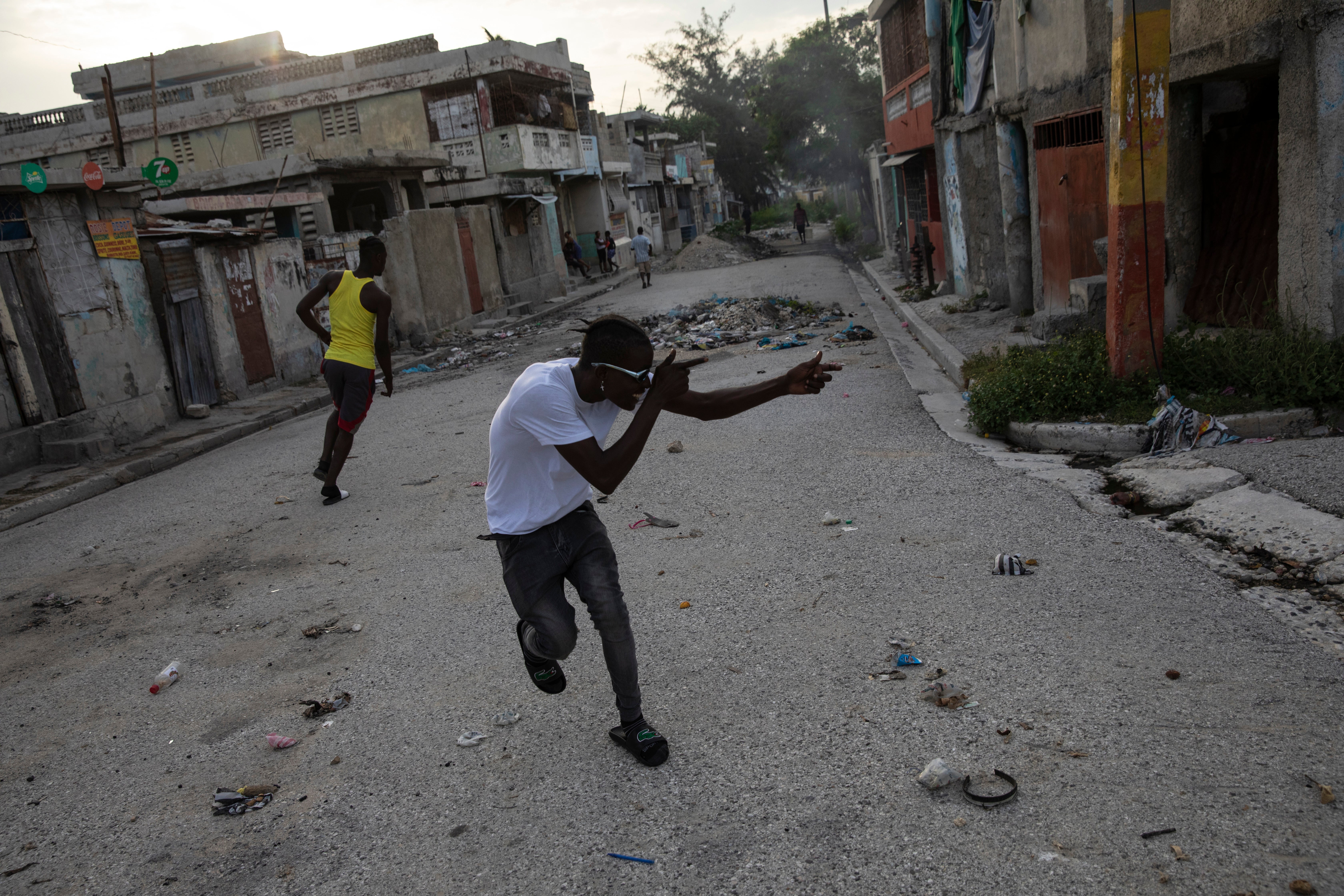"No photo!": A visual essay of Haiti
Throughout his time in Haiti, photographer Rodrigo Abd had his hand on his camera, but even before he could raise it he would hear the chorus of “No photo!”

Your support helps us to tell the story
From reproductive rights to climate change to Big Tech, The Independent is on the ground when the story is developing. Whether it's investigating the financials of Elon Musk's pro-Trump PAC or producing our latest documentary, 'The A Word', which shines a light on the American women fighting for reproductive rights, we know how important it is to parse out the facts from the messaging.
At such a critical moment in US history, we need reporters on the ground. Your donation allows us to keep sending journalists to speak to both sides of the story.
The Independent is trusted by Americans across the entire political spectrum. And unlike many other quality news outlets, we choose not to lock Americans out of our reporting and analysis with paywalls. We believe quality journalism should be available to everyone, paid for by those who can afford it.
Your support makes all the difference.Haiti is not one story. It is many stories -- overlapping, colliding, advancing relentlessly to violent and heartbreaking endings.
The rich and the desperately poor. The brutal and the brutalized. Uneasily and sometimes murderously, they share half an island that is a magnet for natural disasters.
Photographer Roberto Abd, working with reporter Alberto Arce, spent four weeks in Haiti and came away with a kaleidoscopic collection of images -- fragments of slices of life in a tumultuous land.
_____
This story was produced with support from the Pulitzer Center on Crisis Reporting
____
From the beginning, they spent days riding a motorbike around garbage-strewn, dirt streets of the violent, coastal neighborhoods of Cité Soleil, La Saline, Bel Air and Martissant.
One Saturday evening, after a shootout between policemen and a gang, Abd saw a corpse laying face-down in the street with passersby averting their gazes in a common form of self-defense: See no evil to save yourself.
The pedestrians also covered their faces in the presence of a photographer. Abd quickly learned that most Haitians, but particularly the poor, didn’t want to be photographed — not by a white man and certainly not for free.
“No photo. No money. I want no pictures. I don’t want to see you. I don’t want to talk to you.” These were the phrases Abd heard over and over.
The measures that had served him well during two decades of photojournalism -- seeking permission, demonstrating respect and empathy — were not going to be enough in Haiti. Abd encountered constant hostility, even violence, toward a white man with a camera.
On the other hand, Abd won rare access to the homes of the well-to-do who live in Pétion-Ville, on the top of a mountain overlooking the bay of Port-au-Prince
In the past, they have been reluctant to show their faces and lifestyles to the media, but now they want to be seen. They feel they have something to say. Following the assassination of President Jovenel Moïse last summer, many among the elite have given up hope and abandoned the island. Some are still here and still doing business.
“Once you have invested in a place and a hundred workers depend on you, how can you leave? There is no way back,” said one who remained behind.
In the dense gardens of La Reserve restaurant, contestants in a beauty pageant also want to be seen. They aspire to the title of Miss Haiti to represent their country at the Miss World contest. They rehearse on a catwalk, practiced elegance protected from gangs by armed guards around the perimeter.
The contrasts are poignant.
On one of his last days in Haiti, Abd traveled past the last shantytowns of Port au Prince to a previously agreed meeting point north of the airport, where three gang members appeared from behind a cluster of trees. Their faces were covered by rolled up T-shirts and their distrust was such that they asked Abd to lift his shirt: they were not checking for guns but for a hidden camera.
The gang members wanted to convey a message: There is no pride in being a gunman. There is no work, there are no opportunities. If there were, they would not do what they do.
For these young people, the last in line, gangs are the only way to work in Haiti, a homeland swallowed by poverty.
Throughout his time in Haiti, Abd moved about with his hand on his camera, but even before he could raise it he would hear the chorus of “No photo!” It came from the people he was talking to and from those just passing by. Many also wouldn’t give their names. They would consider trading a picture for cash, but no cash, no photo. The message was clear. Why would they help a foreign journalist make money off of their image while they have little to eat? They had nothing else to sell.
They also make a gesture along with “No photo!” — a finger drawn across the neck from left to right, like a fatal knife slice. Abd saw it many times. And he understood. It may be a death threat, but it’s also a statement of need, an indication that while the photographer is bent on capturing the moment, the person he sees in the viewfinder has more basic needs.
And for the moment, that person controls his own story.